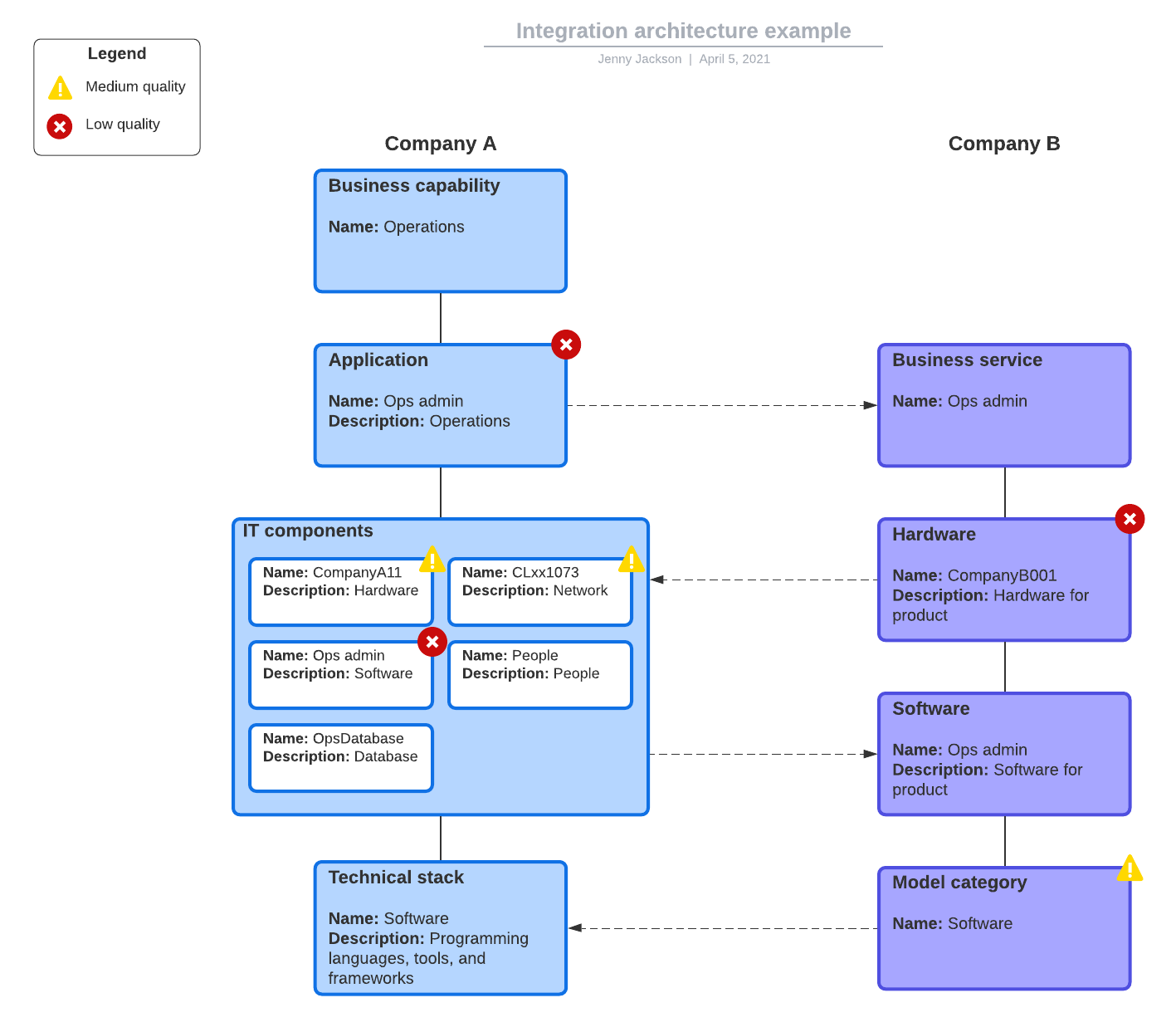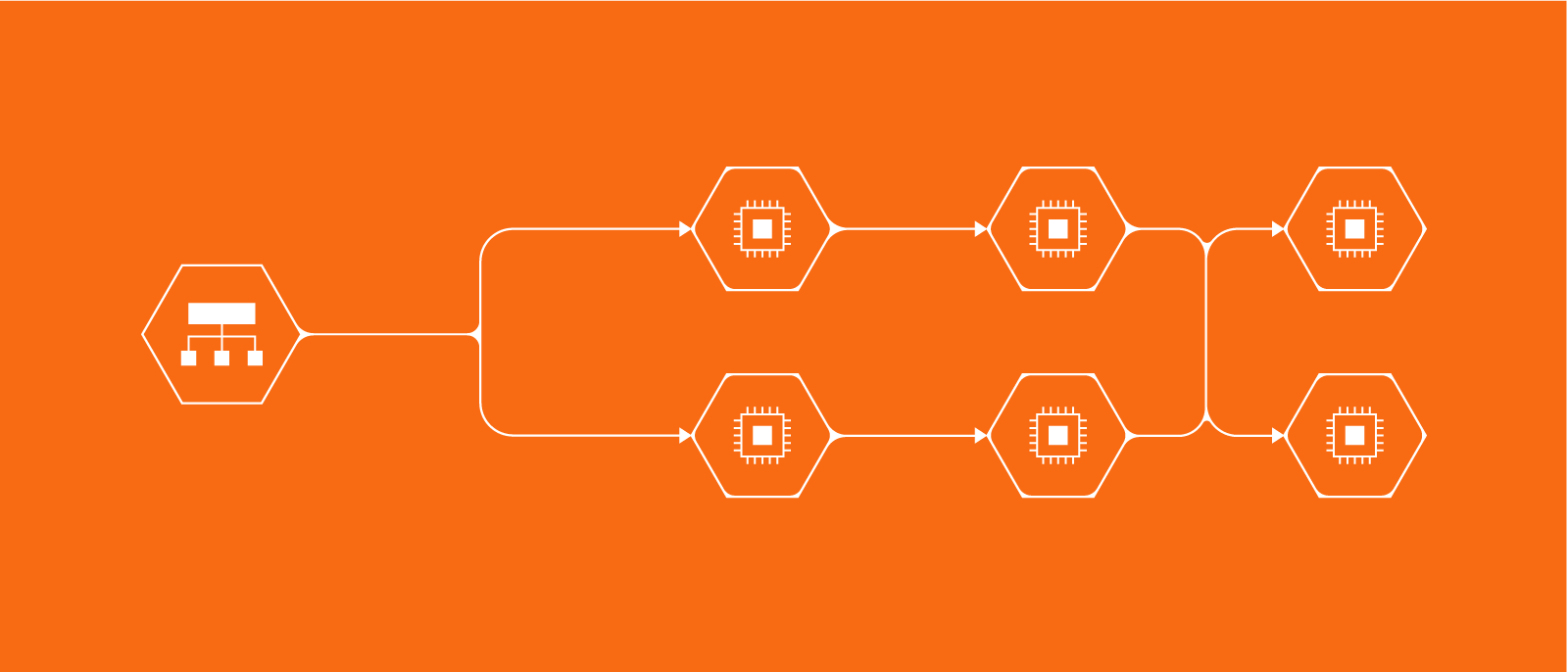An architectural diagram is a visual representation that maps out the physical implementation for components of a software system. It shows the general structure of the software system and the associations, limitations, and boundaries between each element.
Software environments are complex, and they aren’t static. New features are frequently added to accommodate growing customer needs and demands. Your team, even those team members who aren’t immersed in the code every day, needs to understand your organization’s software architecture so it can scale seamlessly.
This is where software architecture diagrams come in. They give the entire development team a visual overview making it easier to communicate ideas and key concepts in terms everyone can understand.
Let’s discuss the different types of architectural diagrams and the purpose that each serves. Even learn how you can draw your own software architecture diagrams to encourage team involvement and collaboration.
Benefits of using software architecture diagrams
In addition to the general fact that visuals help people to retain and recall information longer, software system architecture diagrams offer the following benefits:
- Increase understanding: The diagrams provide an overview of the system, so everybody understands how the different components work together when determining what kind of impact updates and new features will have on the system.
- Improve communication: Software architecture diagrams visualize the game plan for everyone—aligning project goals across all teams, departments, and stakeholders. They also keep stakeholders informed of the project’s overall progress.
- Encourage collaboration and identify areas for improvement: Visualizing the application system structure makes it easier for your team members to discuss the design, find patterns that work well, look for weak spots, and find areas to improve in a collaborative effort.
What a well-crafted software architecture diagram should include
The purpose of the software architecture diagram is to give team members and stakeholders context. A well-crafted diagram should:
- Show system interactions: Use simple shapes and lines to indicate process flows and the ways different elements interact with each other. Highlighting these relationships makes it easier to assess how changes can impact the entire system.
- Include useful annotations: Add helpful explanations to critical pieces of your diagram giving teammates and stakeholders important context and information. It should provide more nuanced details not easily conveyed in the diagram.
- Be visible and accessible: Your diagrams aren’t useful if nobody sees them. Attach your diagram to Confluence and wiki pages, so they are accessible across your organization. Even share important diagrams across your chat platforms and reference them during standup meetings.
5 different types of architecture diagrams
Here are some of the different types of architectural diagrams, why they are useful, and how to build them.
Application architecture diagram
Application architecture diagrams work well for both software engineering and cloud-native applications. As a high-level diagram that shows the software’s basic structure, this type includes software components, their relationships, and their properties. It can also convey relationships with external components such as users, databases, and services. This type of diagram uses simple shapes and lines to represent various components. The basic design makes it easier for you to describe the application’s structure to management and other stakeholders.
Application architecture diagrams help you assess the potential impact that upgrading, replacing, or merging existing applications may have on the system. This also makes them especially useful for code maintenance, enabling developers to easily review code and find and patch bugs.
Tips to create an application architecture diagram
- Use simple shapes and lines to represent components, relationships, layers, etc.
- Group application layers into logical categories such as business layer, data layer, service layer, etc.
- Indicate the architecture’s purpose and the intended outcomes.
- Identify the application’s dependencies and interactions.
- Add text annotations to incorporate details about the structure, groupings, security concerns, types of applications included, application organization, and so on.

Integration architecture diagram
While similar to application architecture diagrams, integration architecture diagrams focus on how the various components interact with each other. The emphasis on the protocols used for integration between the components gives you insight and clarity when determining whether integrations align with your organization’s growth strategy.
This type of diagram can help you to plan out how partner external systems, such as booking agents, fulfillment, ticketing, e-commerce, etc., will integrate with your software.
Tips for building an integration architecture diagram
- Show how current services are organized and exposed both externally and internally.
- Indicate how third parties will integrate with the system.
- Specify how the system will be secured and managed.

Deployment architecture diagram
These diagrams help you to visualize network boundaries and the processors, nodes, software, and other devices that make up the system. Use deployment architecture diagrams to facilitate planning as you determine how many components are in the system, where they fit in the system, and how they communicate with each other.
Typically, deployment diagrams are used to get an overview of the physical layout of the hardware and software in the system. The idea is to help you to visualize how the system will be deployed on the hardware. A deployment diagram helps you to plan strategic application and service upgrades to optimize your resources so they can handle additional process requests and workloads as your organization grows.
Tips for creating a deployment architecture diagram
- Indicate network boundaries and areas where external systems can potentially connect to your system.
- Estimate instance size and indicate where new instances will be deployed.
- Show how and where the system extends to other systems and networks so you can streamline shared resources and services.

DevOps architecture diagram
A DevOps architecture diagram is similar to a process flow diagram. It visualizes the operational flows of application deployments, illustrating how processes flow and what is being deployed to internal and external systems.
You would use this type of diagram to look for ways to improve the application deployment process. You will need to update and improve your DevOps architecture to keep up with continual improvements of deployment tools and changes to other interfacing systems architecture.
Tips for designing a DevOps architecture diagram
- Define the current process flow as a baseline for finding ways to improve.
- Indicate what types of applications will be deployed.
- Display how processes flow across multiple environments.
Data architecture diagram
As the name suggests, data architecture diagrams demonstrate how and where the data flows, is processed, and used. It includes components that define how data is collected in the system. If you are looking for ways to update and streamline data storage resources you would turn to a data architecture diagram. Data collection and consumption is constantly increasing, so you will need to revise and update your data architecture frequently.
Tips for drawing a data architecture diagram
- Illustrate how data is currently processed.
- Reveal how and where data is stored.
- Show the estimated rate of data incrementation. This will give you and stakeholders a good idea how much the system will need to scale.
- Indicate the components that will be needed for future growth.
Start moving faster with templates in Lucidchart
The good news is you don’t have to be an artist to draw architecture diagrams. An intelligent diagramming app like Lucidchart makes it easy to create architecture diagrams and share with your team or stakeholders.
Regardless of what you need to work on, Lucidchart has a large library of templates like network diagrams, AWS cloud architecture templates, software component diagrams, and more to help you draw any type of architecture. Templates make it easy to jump right in and get your projects off the ground quickly.

Browse Lucidchart templates to find one that fits your specific use case.
Go to template galleryAbout Lucidchart
Lucidchart, a cloud-based intelligent diagramming application, is a core component of Lucid Software's Visual Collaboration Suite. This intuitive, cloud-based solution empowers teams to collaborate in real-time to build flowcharts, mockups, UML diagrams, customer journey maps, and more. Lucidchart propels teams forward to build the future faster. Lucid is proud to serve top businesses around the world, including customers such as Google, GE, and NBC Universal, and 99% of the Fortune 500. Lucid partners with industry leaders, including Google, Atlassian, and Microsoft. Since its founding, Lucid has received numerous awards for its products, business, and workplace culture. For more information, visit lucidchart.com.
Related articles
How to design software architecture: Top tips and best practices
Check out these helpful software architecture design tips and best practices for building your own software architecture.
How to conduct a 5 whys analysis
Stumped on a business problem? Try using the 5 Whys. By urging you to look deeper into the issue, the 5 Whys analysis can help you discover the root cause of a problem and put you on track to fix it.

